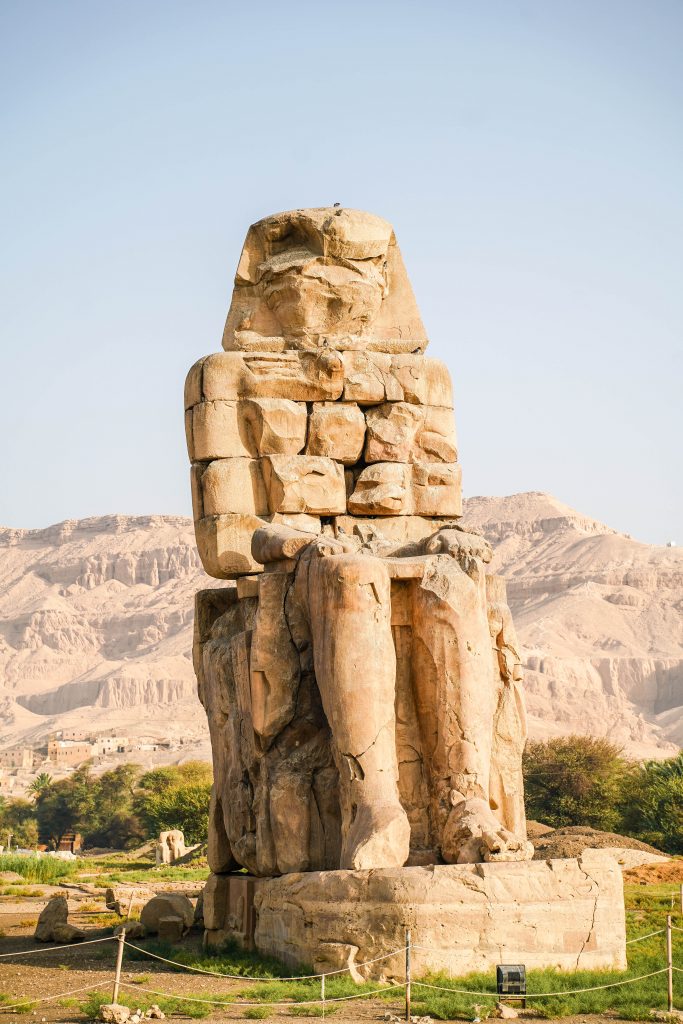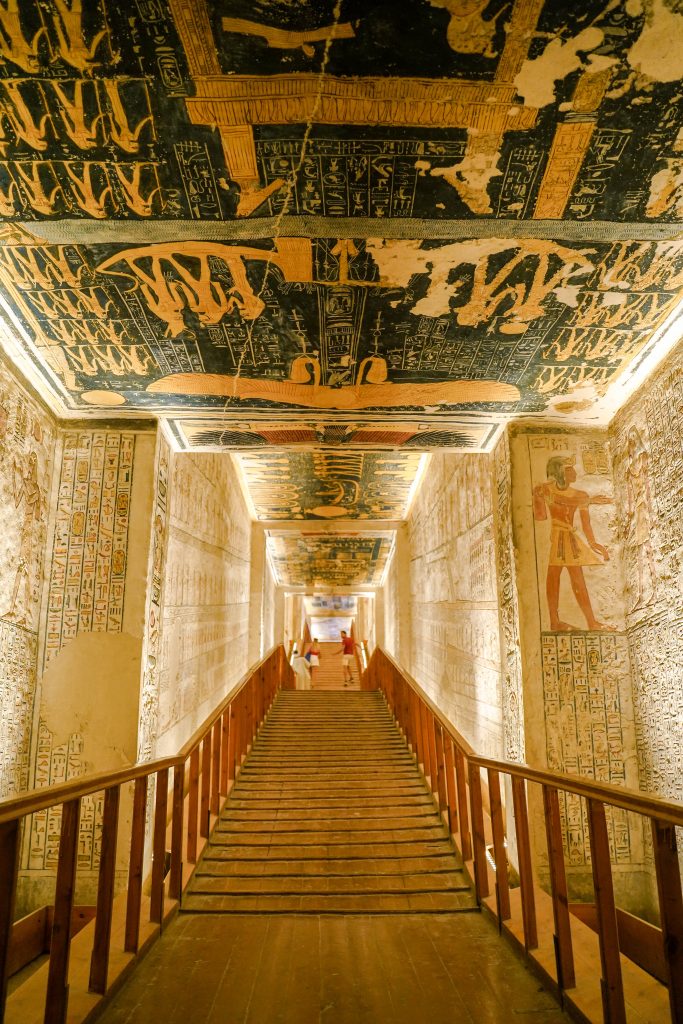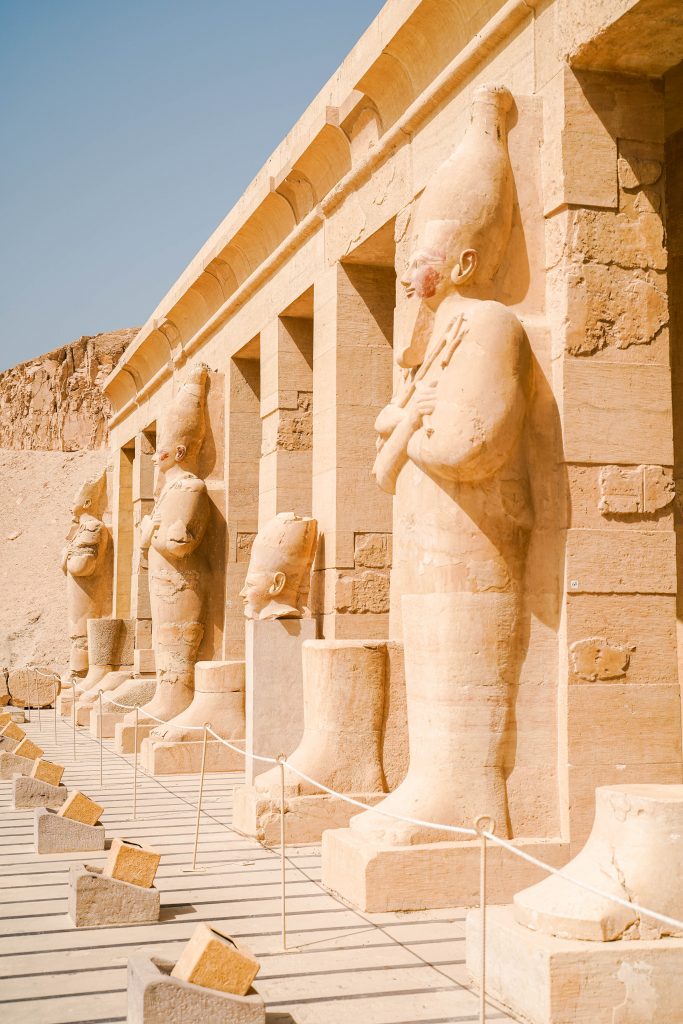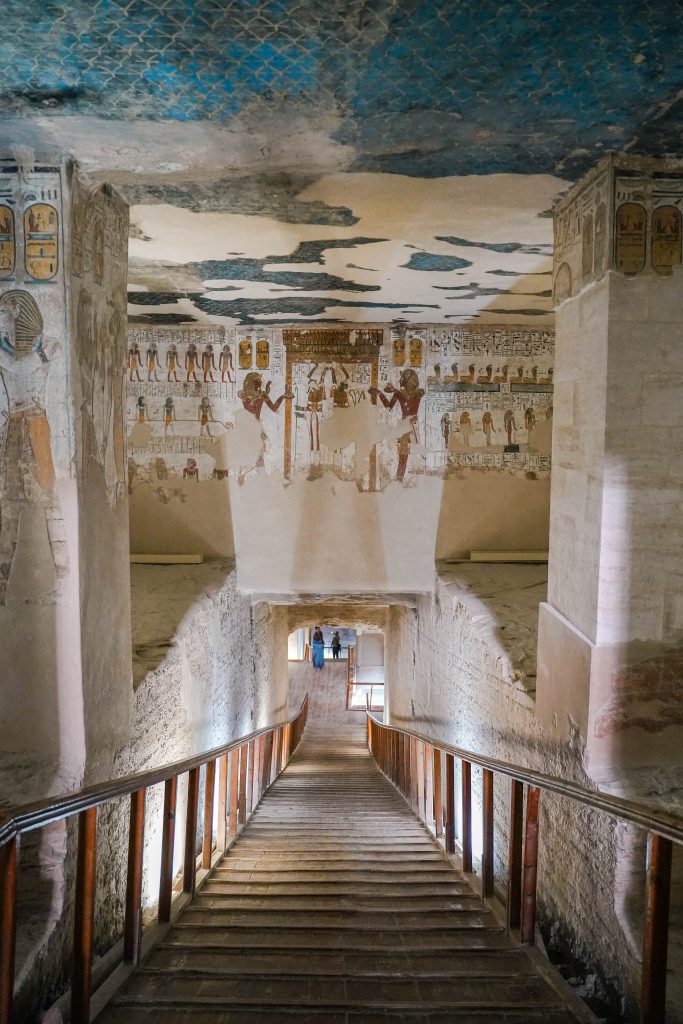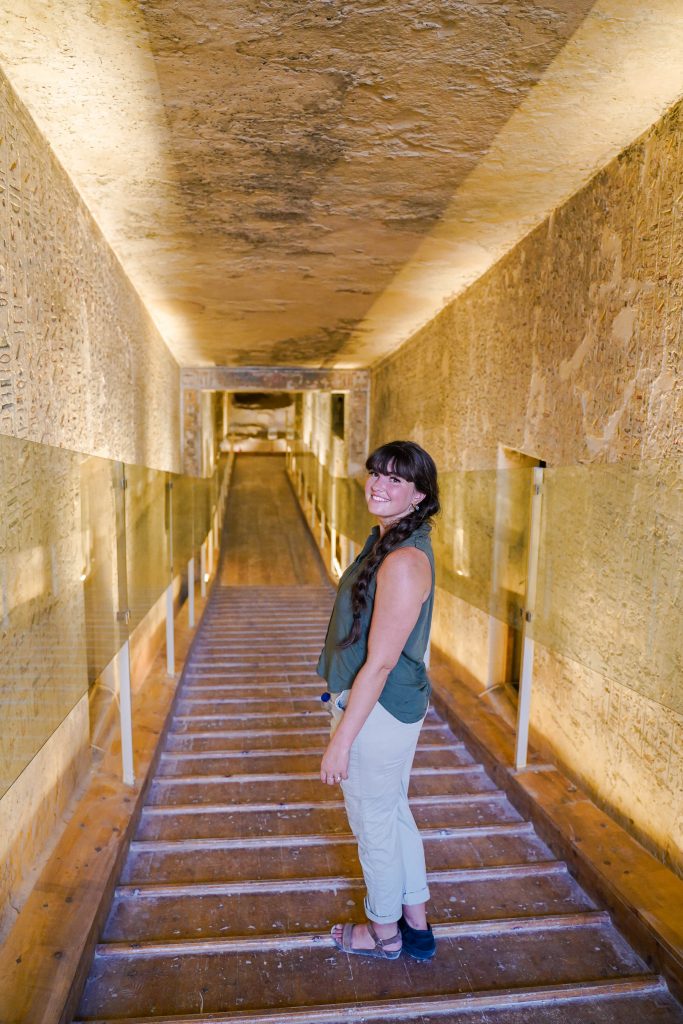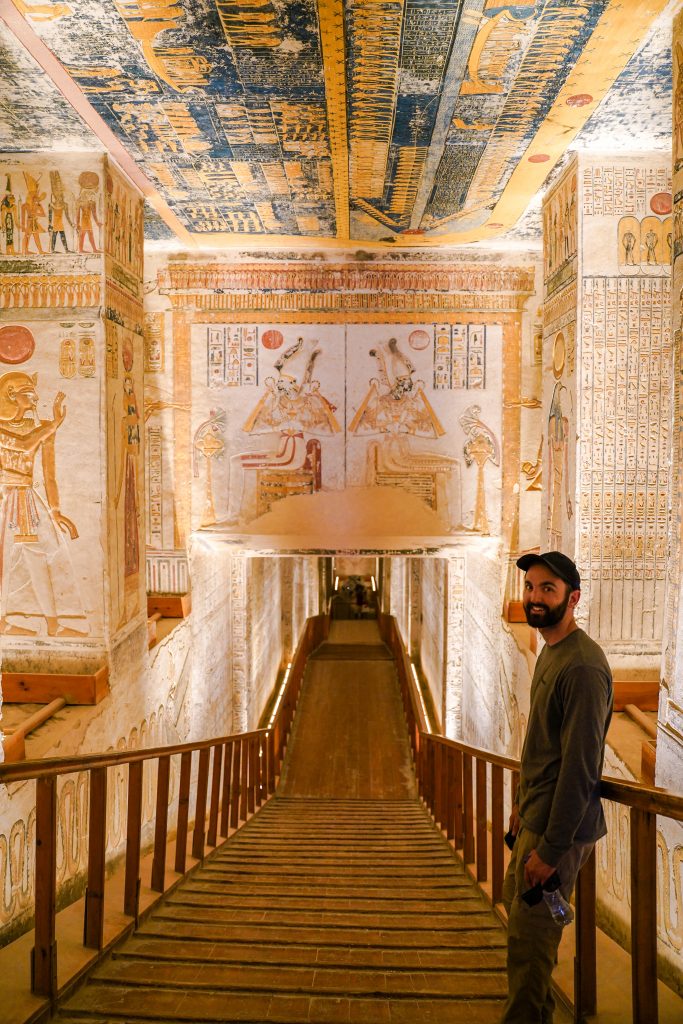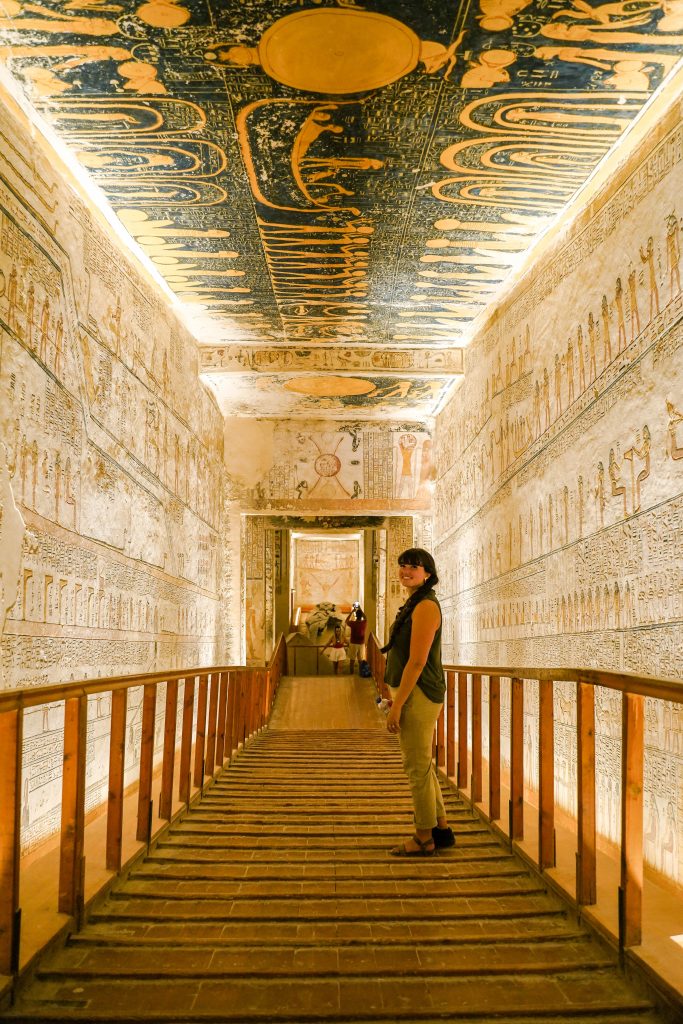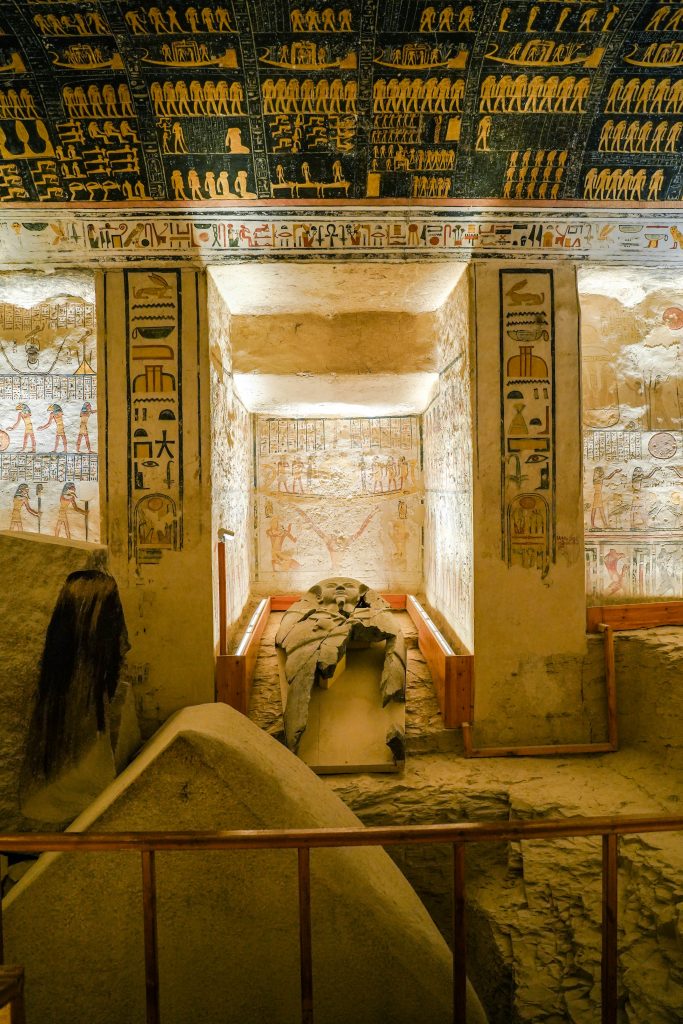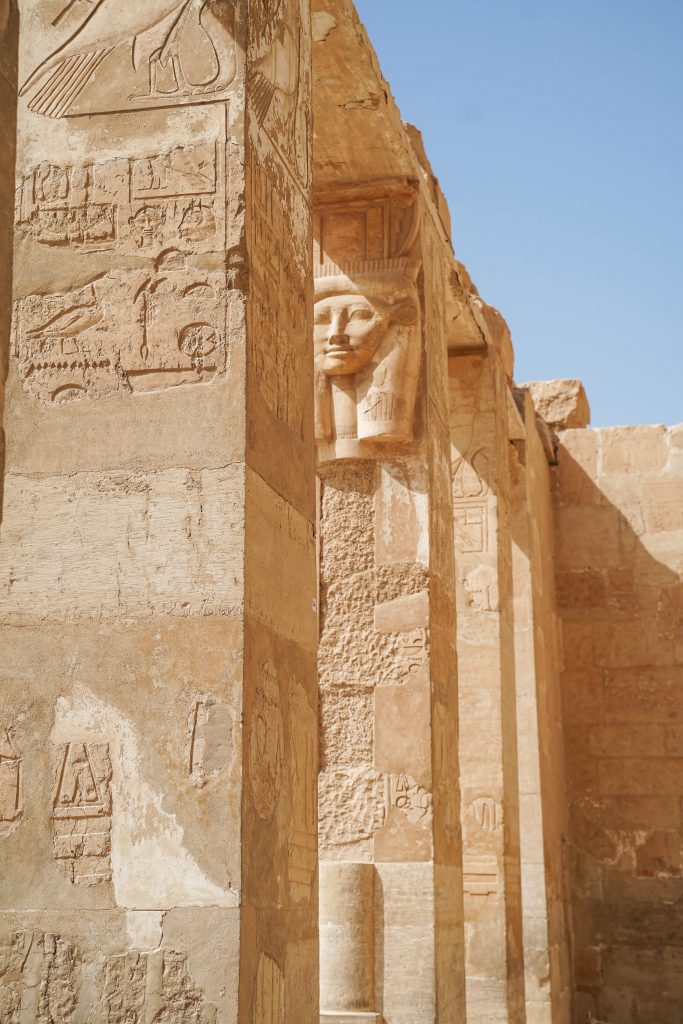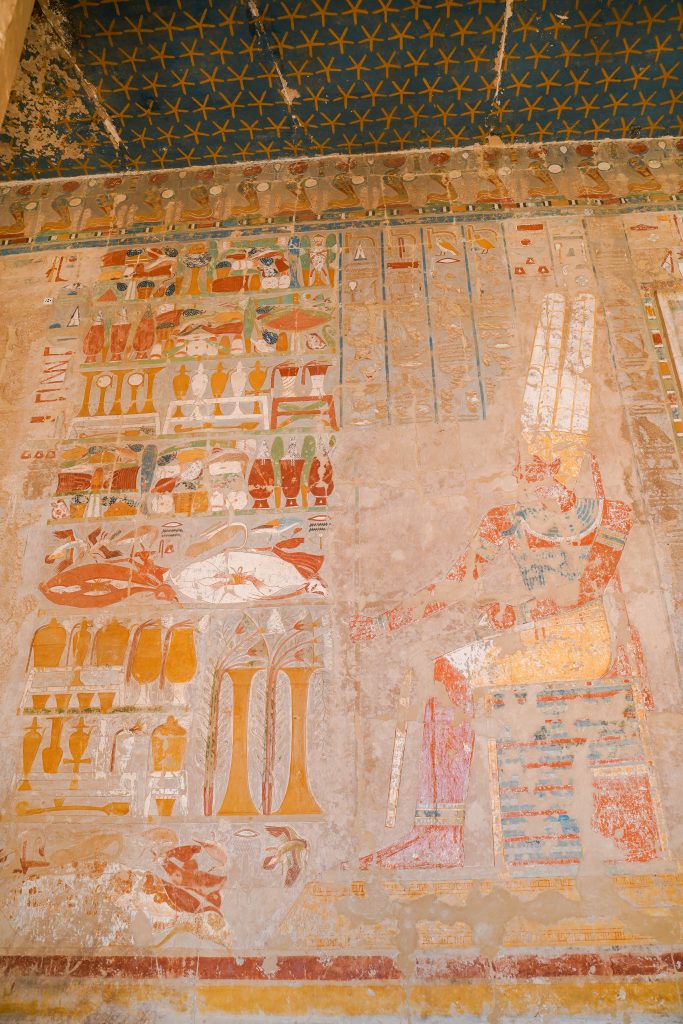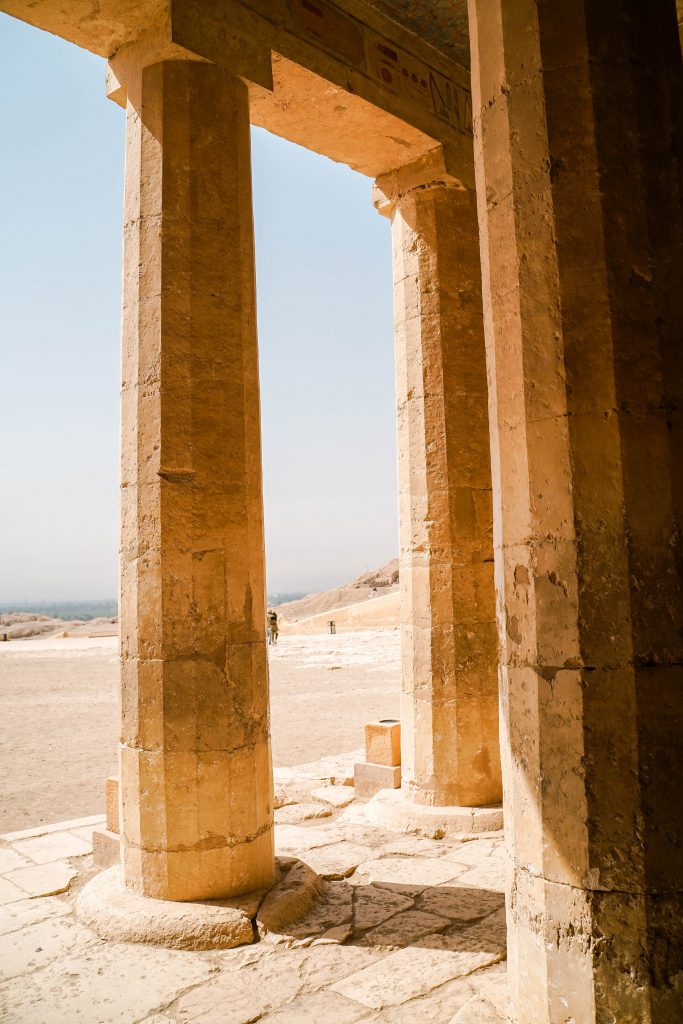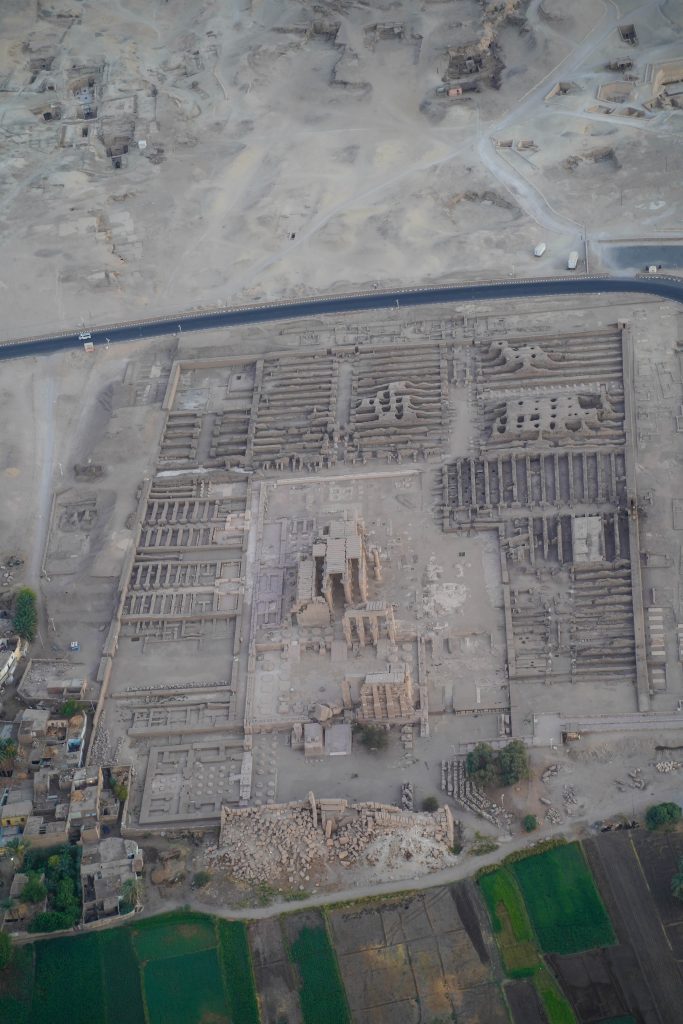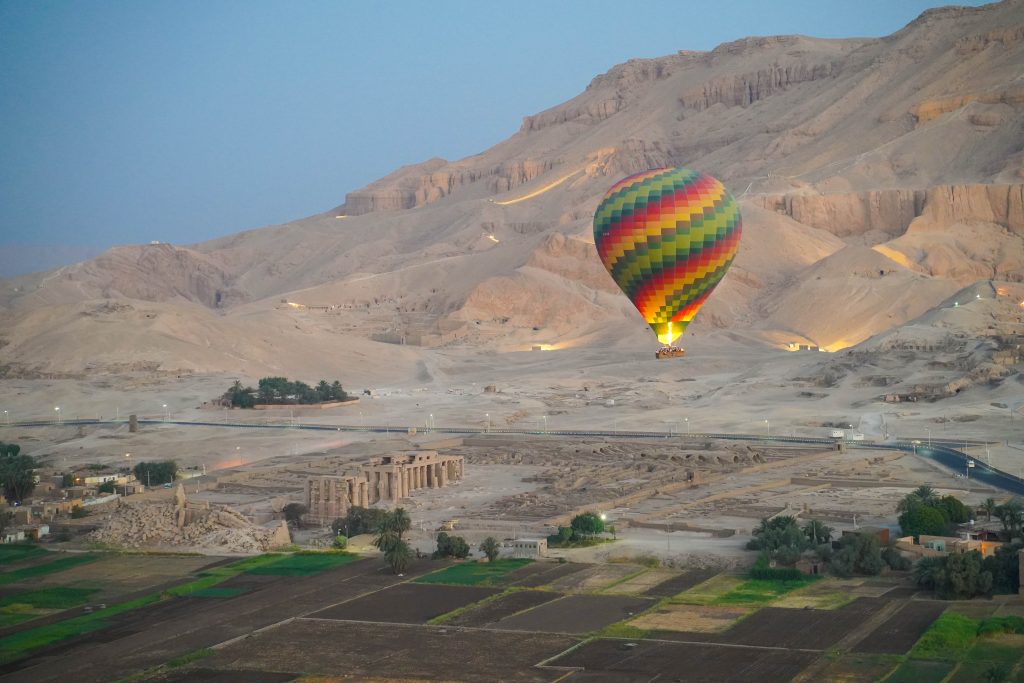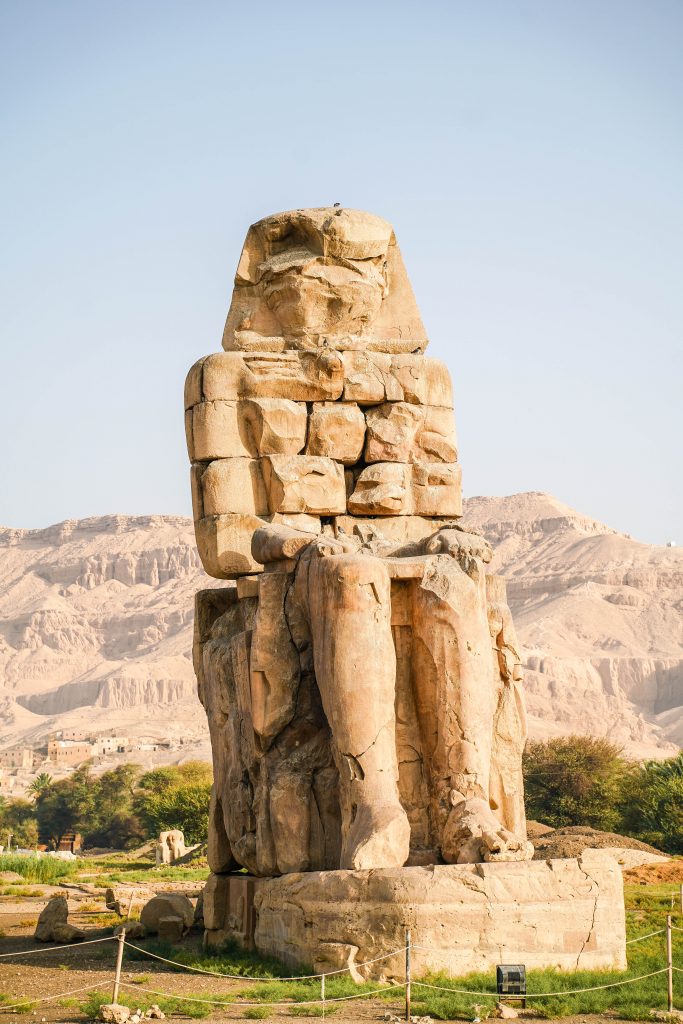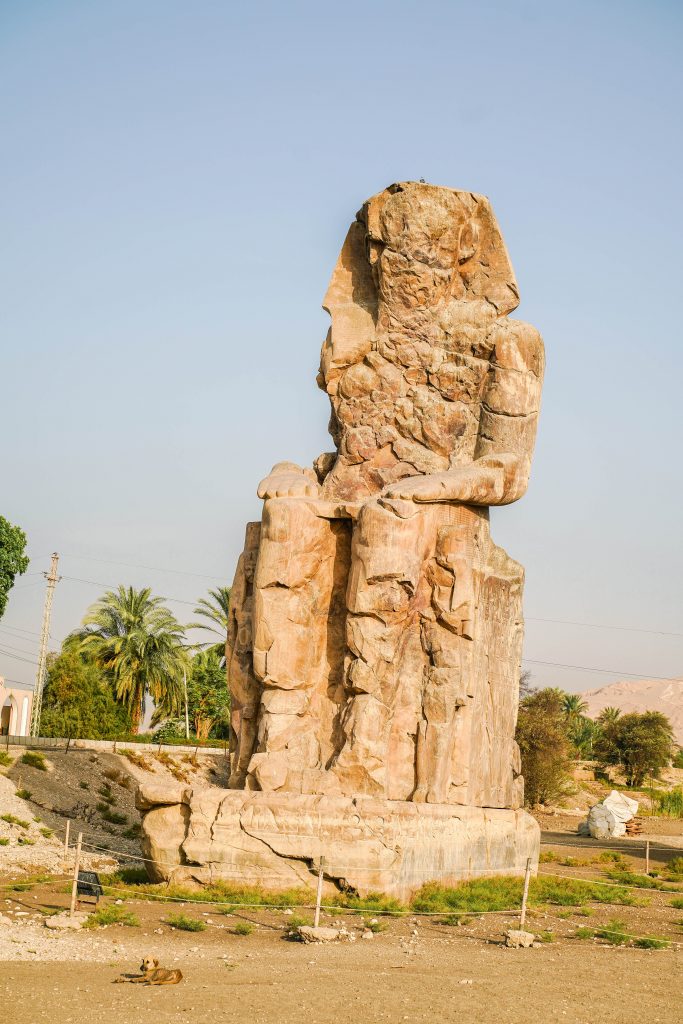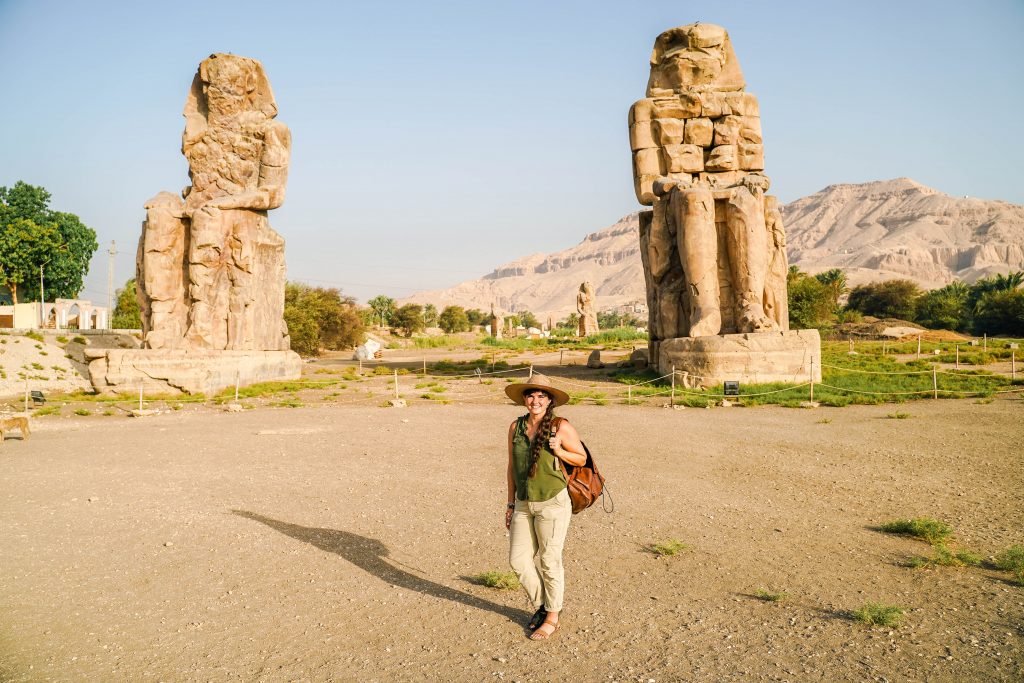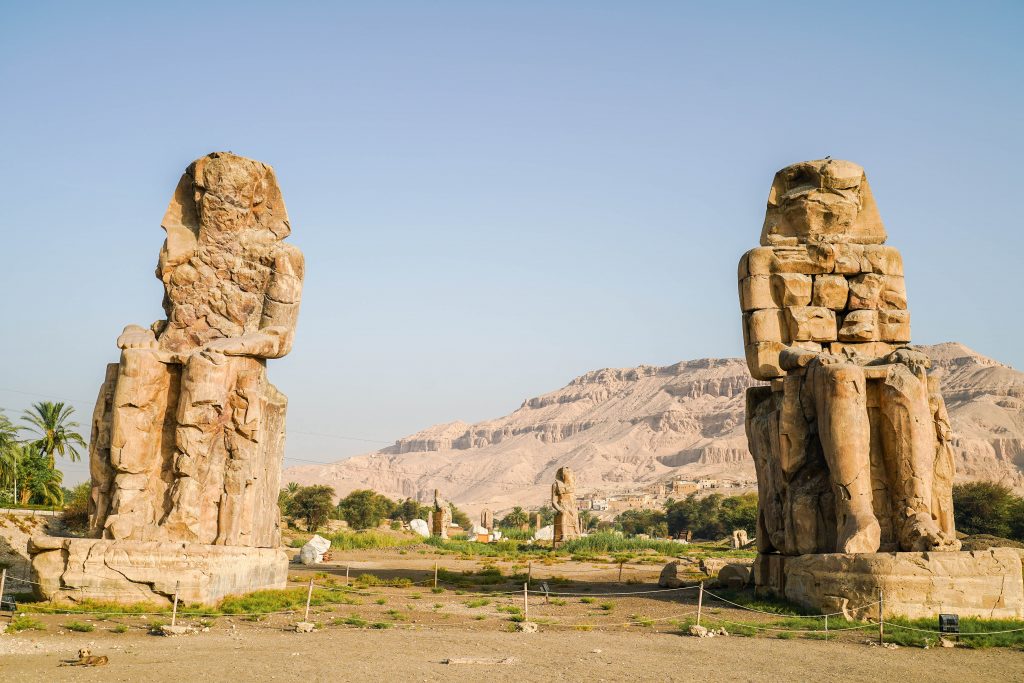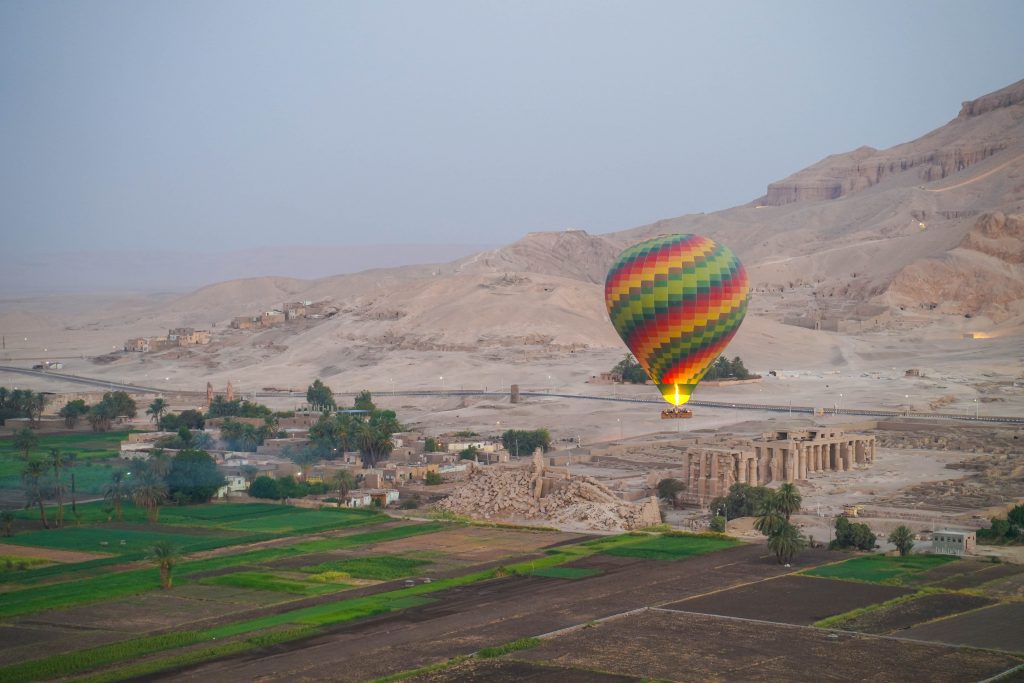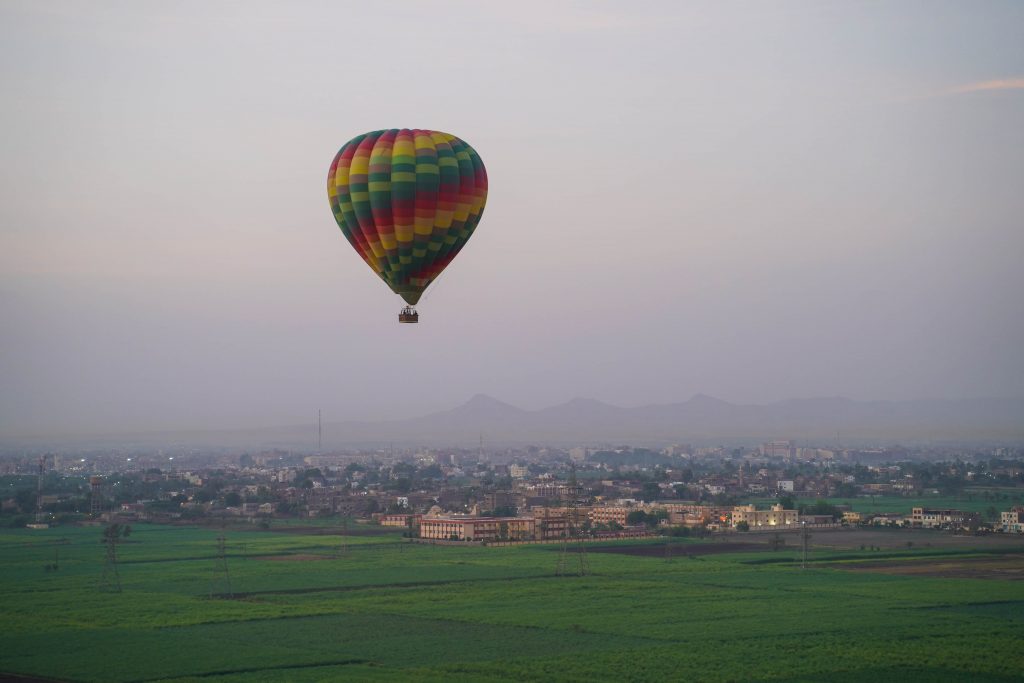When most people think of Egypt, the pyramids and Memphis (the old kingdom capital) come to mind first. Luxor (ancient day Thebes) holds a huge part of story and is not to be missed, from soaring temples constructed through the ages and bright colorful tombs buried beneath the earth- Luxor holds the key to understanding and learning some of the most interesting parts of Egypt’s history.
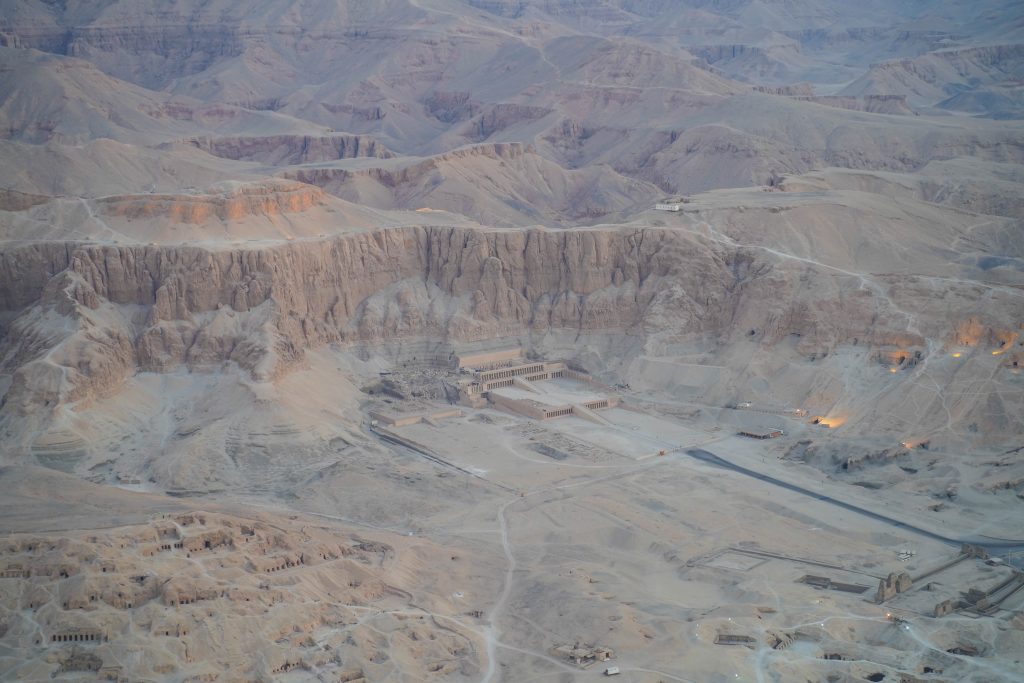
Like 2 sides of a coin, there’s 2 banks of Luxor and they each hold different types of archeological sites and different historical importance. The East bank is where people live, work, worship… it’s where you’ll find a lot of the temples as the sun rises in the East- this represents life.
The West Bank, where the sun sets, represents a journey of the dead to the afterlife. This is where you will find mortuary temples (temples created for preparing the kings for burial) and the magnificent tombs that were built to help guide their occupants to a successful here-after.
Contents:
- Valley of the Kings
- Mortuary temple of Queen Hatshepsut
- Ramesseum
- Colossi of Memnon
- Hot Air Balloon Tour
- Valley of the Queens
- Extended sights to see with 2 days in the west bank
Both banks have lots to see and do so this post will focus on the west bank specifically.
Top things to see in Luxor’s west bank
Valley of the Kings
The valley of the kings is made up of at least 63 known tombs with 20 or so belonging to known kings. The tombs are not as grand in scale as the temples and are mostly devoid of any antiquity now- however the art work on the walls is really impressive to see. The colors are all original and almost all the wall space (including the ceilings) is covered. The way the tombs have been preserved against time is really incredible to witness in person, as is walking the steep narrow corridors down into the rock. For more information and photos from our visit, check my valley of the kings post here.
The Mortuary temple of Queen Hatshepsut
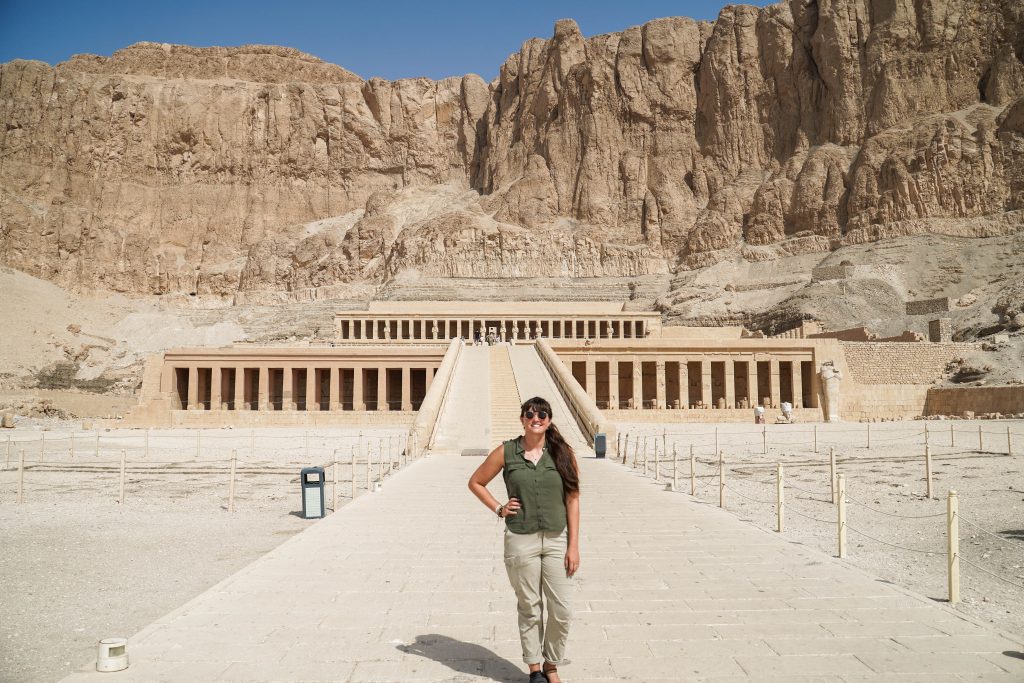
This temple is unlike any of the others you will see on your visit and is widely considered a great architectural wonder of the world. It is cut into the cliffs of Deir el-Bahari (another name used for it) and involves many floors and terrances. It took 15 years to build during the reign of legendary Queen Hatshepsut (which makes this temple worth visiting to honor Hatshepsut alone).
The temple is primarily dedicated to the god Amun (whom Hatshepsut used to legitimize her reign) and includes shrines to 2 other gods – Hathor and Anubis. It is a quick stop taking maybe an hour or so and definitely worth seeing when visiting the other west bank monuments. Read more about this incredible temple in my post here.
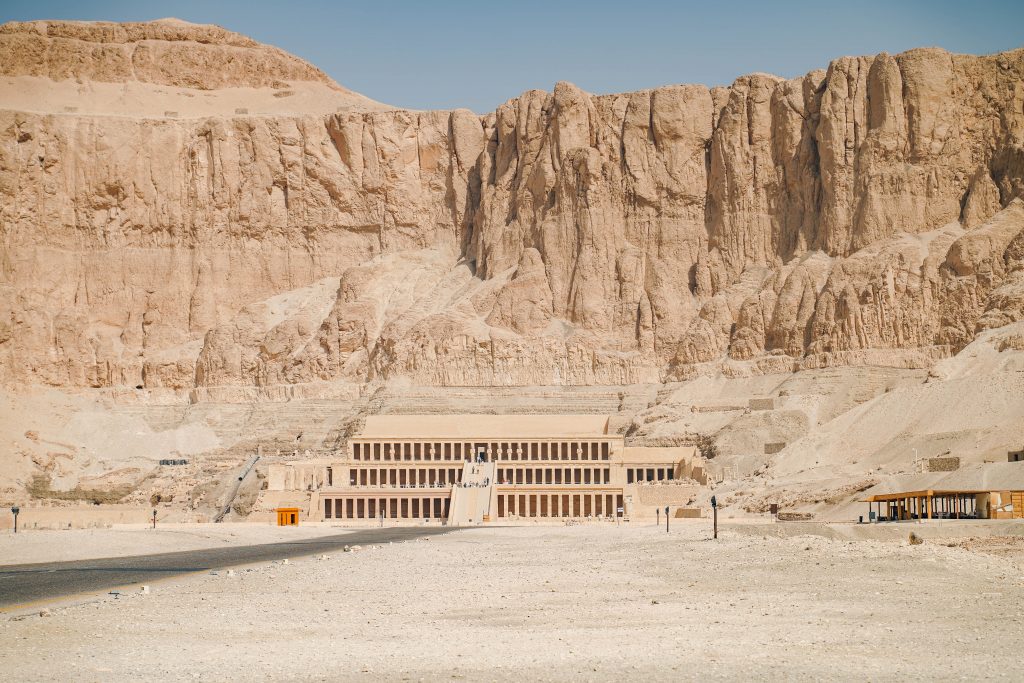
Ramesseum
The Ramesseum is a mortuary temple dedicated to Ramesses II. (Same guy that built a LOT of temples during his long reign) This temple doesn’t often make it into a must do for people with shorter itineraries but looks like a great stop and will have less crowds if you’re visiting during the busy season. We didn’t have time on our day tour but we did marvel at the site from the air during our hot air balloon tour.
Colossi of Memnon
The two massive statues are of the 18th dynasty Pharaoh Amenhotep III and greet all visitors on the main road to the west bank of Luxor. They are built from quartzite sandstone which was quarried down river near Cairo and transported 420 miles (675 km) overland to their present site.
They used to stand guard at the entrance to the pharaoh’s massive mortuary temple, which at the time was larger even than the temple of Karnak. The temple is all in ruins however due to being in a major flood plain for the Nile and potential dismembering from successors in the later dynasty’s to build their own temples. They are free to visit and a quick stop.
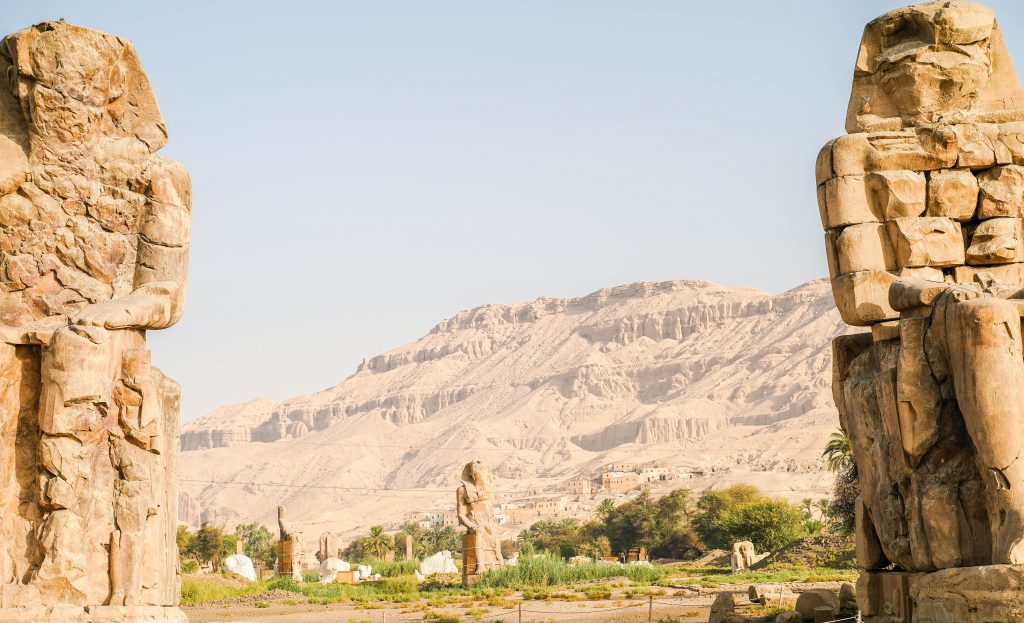
Hot Air Balloon tour
If you’re visiting Luxor and have a hot air balloon experience on your bucket-list, I can’t recommend this tour enough. There is nothing life being sky bound in the early morning- watching the sunrise over the east bank of the Nile and witnessing the lights of the west bank monuments flicker off. The air is crisp and silent, punctuated only by the jet of hot air filling the balloon and all around you can see other hot air balloons flying on the wind.
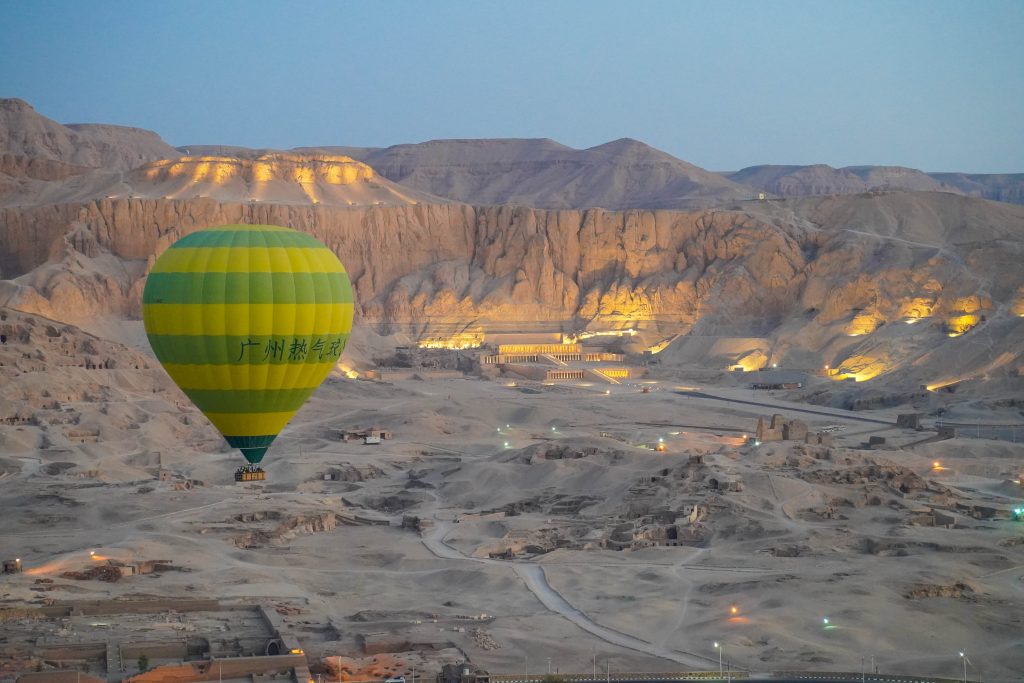
You get a birds eye view of so many of the west bank archeological site but on top of that, get to experience the wonder of feeling like you’re part of a balloon festival. Even during the low tourist season, there were around 20 balloons in flight and I just can’t really emphasize how incredible this experience is. For more photos and information from our tour, you can see my post here.
Valley of the Queens – Nefetari’s tomb
The Valley of the Queen’s is where the wives of pharaohs were buried in ancient times since valley of the kings was a more privileged (and too small) of a valley to bury everyone. The main valley contains at least 91 known tombs dating back to the same dynasties as the valley of the kings. We didn’t have time to visit this valley but the main thing to see there is Queen Nefetari’s tomb.
Queen Nefetari is the same queen honored at Abu Simbel’s smaller temple and was a very revered queen of the time. Her tomb is the most expensive tomb you can visit but for good reason. It is the single best preserved tomb and resembles how it would have looked at the time it was built with white plaster and colors all in original condition. If you want to actually get a clear picture of what the colors on the walls looked like, a trip to this elaborate tomb is worth it.
Cost to visit is 1400 EGP ($90 USD) per person.

If you have more time (2 days to see the west bank)
Mortuary Temple of Ramesses III
Mortuary temples are temples built to honor a pharaoh instead of a god. This temple was built for Ramesses III (who consequently has a beautiful tomb as well in the valley of the kings). It has impressively large pylons (gates) at the entrance and few adventurous corners to explore. It’s best known for inscribed reliefs depicting the king’s defeat of the sea peoples during his reign.
Valley of the Artisans (Deir El-Medina)
These are the tombs of the highly skilled artisans who worked on the tombs in the Valley of the kings. It is an ancient village which gives insight to the lives of the laborers during their work on the elaborate tombs over in the valley of the kings. The tombs here are less extravagant and much smaller but worth the time if you have 2 days.
Temple of Seti I
This temple was begun by Seti I and was completed again by Ramesses II after Seti I’s death. It is dedicated to Amun-Re. This is another cool spot to check out if you’re visiting during crowded peak season and want to have a temple more to yourself.
Howard Carter House
Howard Carter lived from 1874-1939 and was a famous English archeologist and Egyptologist. He’s best known for his discovery of the intact tombs of King Tut in 1922. His house on the west bank of Luxor has been preserved and turned into a museum so stepping into it feels like stepping back 100 years into the real life of an archaeologist. If you’re a fan of archeology and learning about how these ancient wonders were discovered- this is a great stop.
And there you have it. I wish we had more time to see more of the West Bank but our already lengthy tour did not plan for it. I definitely think there are some must do’s on this list as with all things in Egypt, you kind of have to be there to really experience the wonder and history. Which places on the west bank are on your list?
